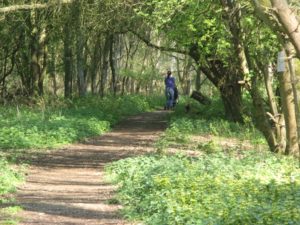Support us from £3/month
We deal with almost 1000 cases a year assisting communities, groups and individuals in protecting their local spaces and paths in all parts of England and Wales. Can you help us by joining as a member?
We are relieved that the environment secretary has rejected plans by the Nettlebed and District Commons Conservators to erect more than two kilometres of fencing around Kingwood Common in the Oxfordshire Chilterns.
The application for works on the common under section 38 of the Commons Act 2006 was heard at a public inquiry in April, and the inspector, Heidi Cruickshank, made the decision on behalf of the Secretary of State for Environment, Food and Rural Affairs. We were represented as an objector by our member Mark Saunders. There were 76 objections.
Ms Cruickshank rejected the fencing on a number of grounds. She agreed with the objectors that the law does not allow Kingwood Common to be fenced. It has its own Act of Parliament, the Nettlebed and District Commons (Preservation) Act 1906, which imposes a duty on the conservators to ‘keep the commons uninclosed and unbuilt on as open spaces for the recreation and enjoyment of the public’. The inspector did not consider that the proposed works could be implemented under the 1906 act.
Although she concluded that the application must fail on that ground alone, she did go on to consider the evidence in relation to the various interests which she was required to consider under section 38, which include those with rights on the common, the neighbourhood and the public. The purpose of the fencing was to enable the conservators to graze four to six cattle on the land for a few months of the year.
The inspector said that the fencing would have an adverse effect on public rights of access to the common, and would deter some people from walking or riding on the common.
While she did not believe it would have an adverse effect on the landscape, she was concerned that the potential effect on historic features ‘have not been appropriately and sufficiently assessed and addressed’. Therefore, she decided that the application should be rejected on merits as well as on legal grounds.
Says Nicola Hodgson, our case officer: ‘This is an excellent result. We have long argued that the application was unlawful because of the special legislation applying to this common. But we are delighted that the inspector has also agreed with us that the fencing would be damaging to the public interest.
‘It is regrettable that the conservators obdurately forged ahead with the application, despite being advised that it was wrong in law, and that they failed to consider all the relevant issues on common land, such as the effect on public access. This decision will bring home to them that this common, which is under their management, is special.
‘This is a great victory for the public and we were pleased to help in its achievement,’ Nicola concludes.

